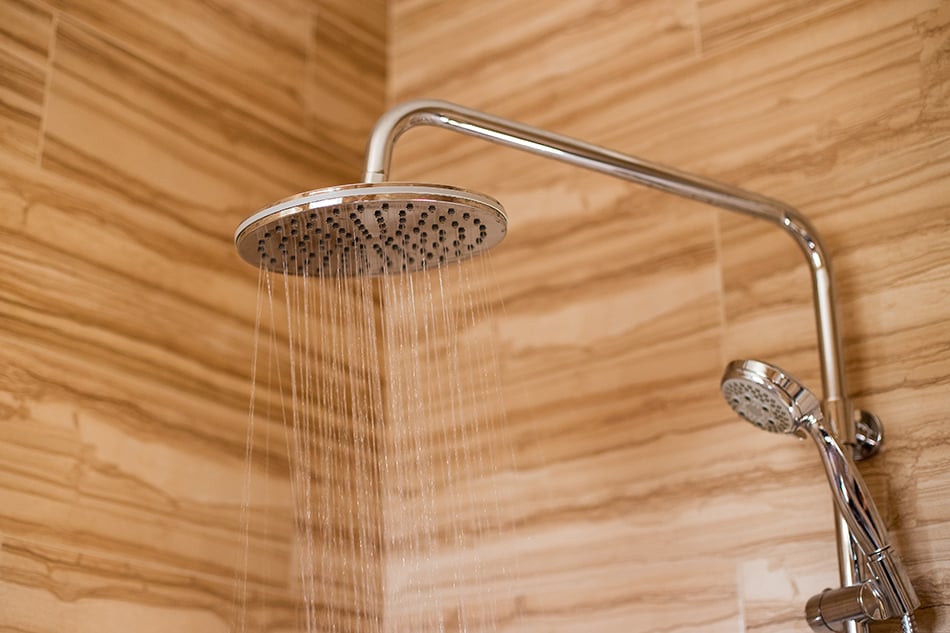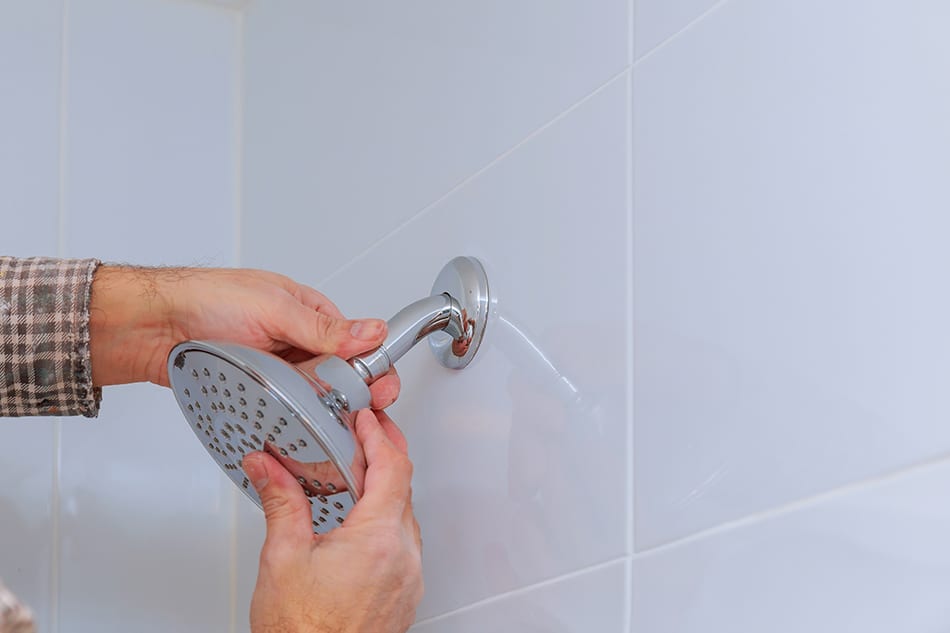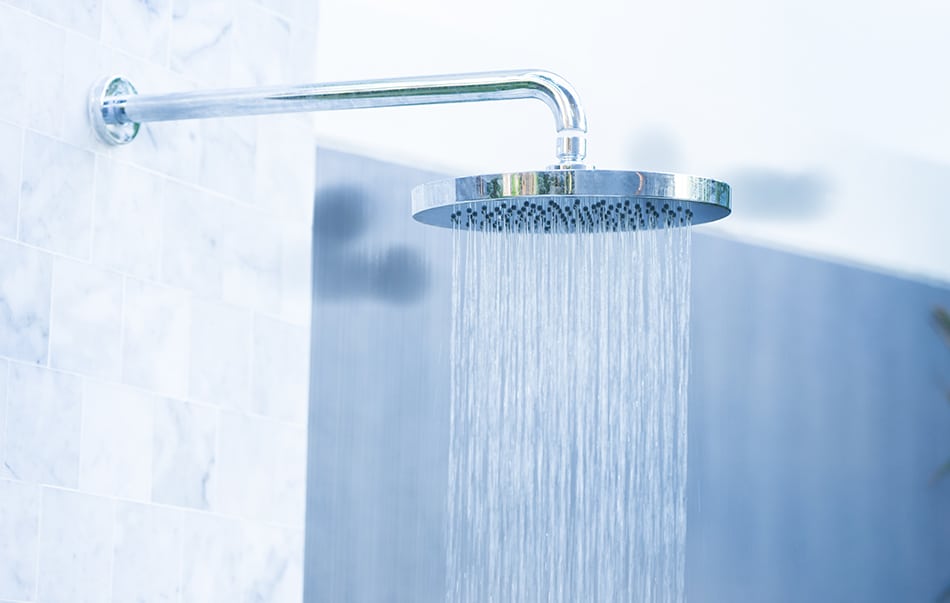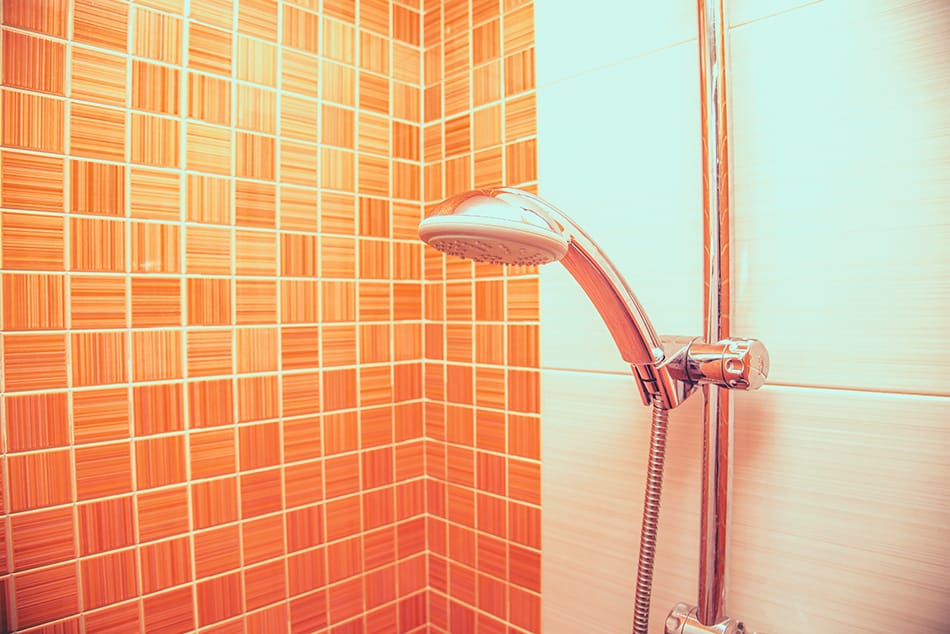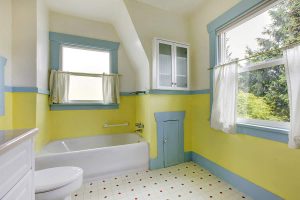When remodeling a bathroom, you might be wondering how high you should fix your shower head to the wall.
Common showerheads are fitted at a height of 80 inches from the floor of the bath or the floor of a shower tray. However, there are no official guidelines or set requirements when it comes to shower head height, and instead, you can fit it to work with your own circumstances and preferences.
However, there are a few points you need to consider before deciding on your shower head height, which we discuss in detail here.
Standard Height of Shower Heads
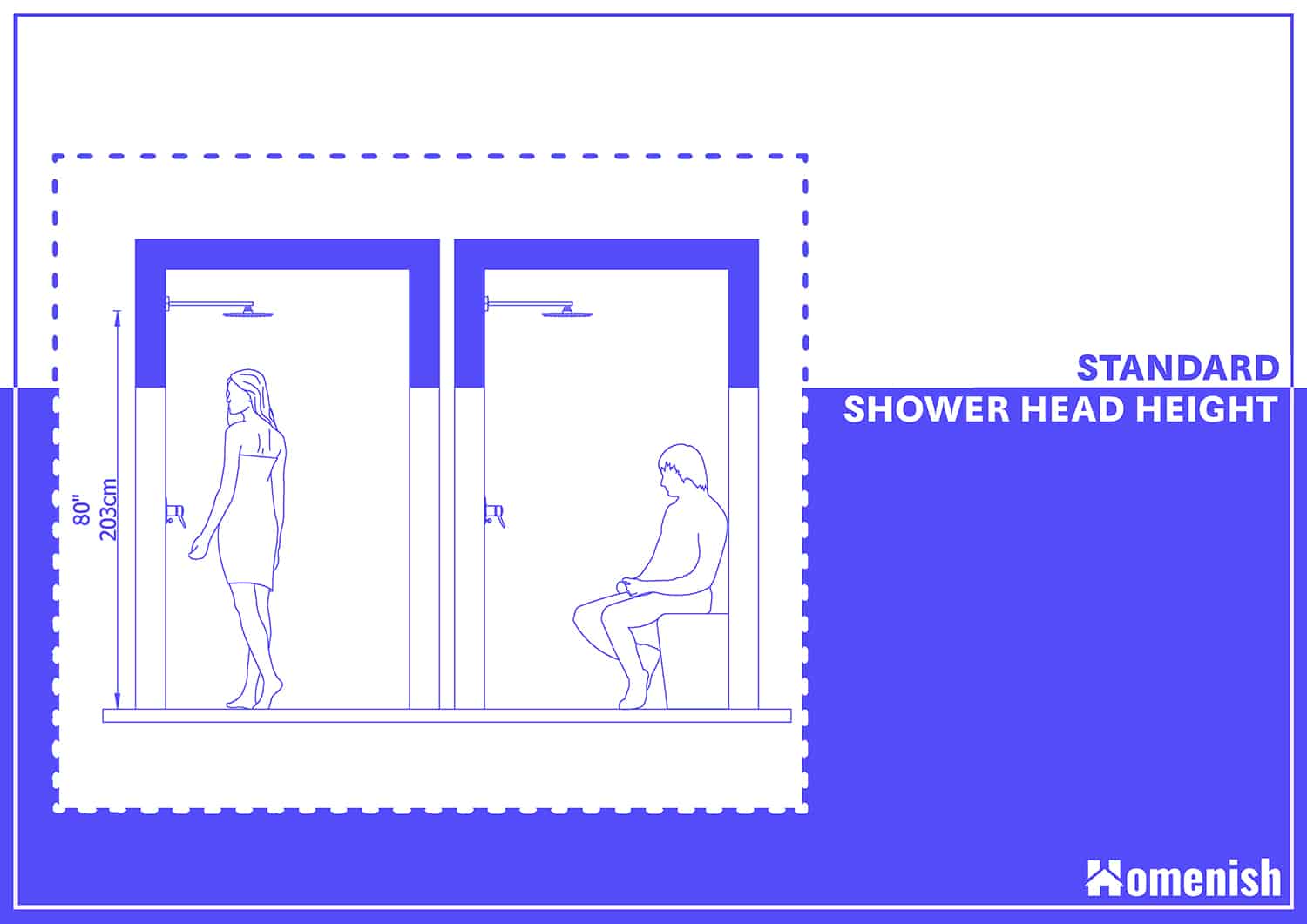
Most showerheads are fitted at a height of 80 inches from the floor of the bath or the floor of a shower tray. This is the standard height that bathroom fitters install showerheads at because it allows the majority of the population to comfortably fit underneath the shower without it being too tall to reach.
However, there is no reason you have to set your own showerhead at 80 inches, and this measurement can be adjusted to suit your family if you have a particularly tall family member or if your family is shorter than average.
In bathrooms that will be used by many people, such as in hotels or spas, the shower heads are fitted higher than standard domestic showerheads. In these settings, showerheads will be fitted anywhere between 80 and 96 inches as a way of ensuring tall guests are able to use the shower.
You might also notice that the majority of hotels and guest houses choose to install handheld showerheads or showerheads that can slide up and down a fixed vertical bar so that the guest can select their own showerhead height.
Factors Affecting Shower Head Height
When considering the height of your shower head, you’ll need to think about other factors besides the height of the users.
Shower Curtain and Screen Height
If your shower is over a bathtub, you’ll need to take into account the height of your shower curtain or shower screen, and in a shower cubicle, the screen height needs to be considered. This is because you need to ensure the showerhead height is compatible and won’t result in water spraying over the shower screen and getting the rest of the bathroom wet.
If your shower head will point downwards, for example, a rain shower head, then fitting it at a height taller than the shower screen or curtain won’t be an issue because the water will spray directly downwards into the bath or shower tray. However, if the water sprays outwards, then it will need to be fitted at a lower height than the shower screen to prevent water from going everywhere.
Ceiling Height
Another consideration will be ceiling height in the bathroom, as this can restrict shower head height. If your ceiling height doesn’t allow you to fix your shower head at your desired height, you can combat this by lowering the floor.
One way to achieve this is by selecting a slimline shower tray. These trays have a very low profile which means the distance between the shower floor and the ceiling will be extended compared with regular shower trays, which raise the floor level by several inches and cause you to lose valuable space. If this still doesn’t provide adequate space between the floor and ceiling to meet the needs of the taller members of your family, you could sink the bathtub or shower tray into the floor by a few inches.
How High Should a Shower Head Be?
For your own personal bathroom, you should install the showerhead in a position that is higher than the tallest person in your home. This ensures that everyone in the family will be able to comfortably fit under the shower and enjoy it. Take the height of the tallest occupant of your home, and add three to five inches. This will give you the ideal height of the showerhead, which provides enough headspace and room for hands on top of the head to shampoo hair.
The shower controls need to be a height that is accessible to everyone in the family; however, if you have young children, don’t be tempted to install the shower controls at a height according to their size, as children grow quickly and you will be stuck with unusually low shower controls.
Types of Shower Heads and Their Heights
Wall-Mounted Shower Head
Wall-mounted shower heads are fixed to the wall, and their height cannot be adjusted. For this reason, it’s important to carefully consider the heights and needs of your family before having the shower head fixed into position. The standard height for these types of shower heads is 80 inches from the floor, but this can be altered to fit your own family’s needs.
It is recommended that a wall-mounted showerhead should be fitted at a minimum of 72 inches from the floor because if it was any lower, it would be a struggle for average height guests to use and could be a problem for future owners of the property.
The highest a wall-mounted showerhead should be fitted is recommended at 96 inches, though this might differ depending on room height. The standard height of rooms in most new build properties is 94 inches, which will limit the height at which you can place the showerhead.
Rain Shower Head
Rain showerheads have become increasingly popular in recent years, as they deliver a refreshing and revitalizing experience that feels like you are standing outside in the rain. To fully appreciate this experience and get a true rainfall sensation, you’ll need to fix the showerhead a few inches higher than usual.
This is because if the showerhead is too close to your head, the running water can feel heavy and harsh. Adding a few inches to the height will give a more authentic rainfall feel. The standard recommended height of a fixed rainfall showerhead is 84 inches from the floor, but if you are tall, you should increase this.
Handheld Shower Head
A handheld showerhead is an excellent solution for a family that has members of dramatically varying heights, as they can hold the shower head over them at their ideal height. The drawback of these types of showerheads is that they require the user to hold them, which can make washing your hair or body tricky with only one remaining hand free.
They also tend to be smaller than fixed showerheads, so the volume of water flowing out might be limited. Handheld showerheads require additional fittings and fixtures on your shower wall, and they have a long hose attached which allows you to stretch the showerhead out to reach different areas.
This makes it great for targeted cleaning and also makes it a useful tool for cleaning the shower itself; however, it might be a problem for some people if they don’t want the aesthetic of additional pipes, hoses, and fittings in their bathroom.
These types of showerheads do offer many benefits, though, such as the ability to move the showerhead to different parts of your body to get a thorough clean, and they are also easier to keep in good condition as they can be easily cleaned without having to reach up high.
Handheld showers are installed, as standard, at the height of between 72 and 78 inches from the ground. This is lower than fixed showerheads in order to allow people of varying heights to reach the showerhead and be able to remove it from the stand and use it. Handheld showers are often popular among families with young children because they allow the children to take control of cleaning themselves by holding the shower head and spraying it over their body.
Some children also have a problem with water coming from overhead and may dislike getting water in their eyes. This can be prevented with a handheld showerhead as they can direct the water away from their face.
Adjustable Height Shower Head
An adjustable shower head is one that is fixed to a vertical pole and can slide up and down. These types of shower heads usually have a button or a tightening mechanism so the user can find their ideal height for the showerhead and secure it in place for the duration of their shower. The next person can then loosen the mechanism, move the showerhead to its preferred height, and secure it again.
This type of showerhead is a great compromise between a fixed showerhead and a handheld showerhead, as it allows the user to operate the shower at different heights but doesn’t come with the issue of needing to be held in place.
The main issue with these types of showerheads is that they require more visible pipework in your bathroom. If you are aiming for a minimalist look with clean lines and hidden pipes, then a fixed showerhead will be your best option to achieve this.
